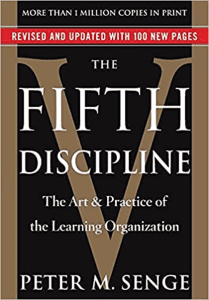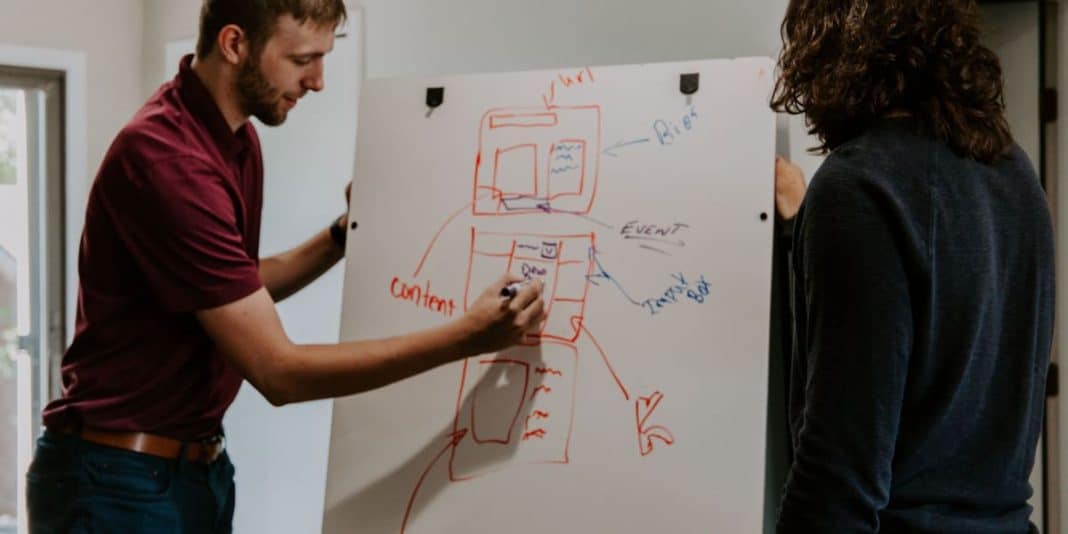Here are some selected new mental models required by strategists.
First, how do strategists shape their reality? According to Peter Senge’s best-seller The Fifth Discipline: The Art and Practice of the Learning Organization, (link) strategists shape their reality through systems thinking, by continuously seeking personal mastery, by demonstrating a willingness to adopt new mental models, by exhibiting the ability to build a shared vision within their organization. Finally, they promote and champion team-based learning organizations. These attributes must be acquired by you as part of a strategist’s perspective.
The essence of systemic thinking is the ability to think conceptually with the right brain. It is the ability to see inter-relationships as a whole rather than linear, cause-and-effect chains. The industrial age mental models for the most part focused on the parts of an organization rather than the whole. As a result, organizations often implement short-term improvements without fully understanding at the macro level the long-term outcomes for the entity. Read “Economy of Effort-Introduction of the tank at Cambrai” (Link) in the Military tab for an example.
A good tool for systems thinking is to develop a systems map. A systems map is a diagram showing the key elements of the system and how they are interconnected. The role of the left brain and right brain in the conceptual age will be discussed in a few moments.
Personal mastery is about growth and balance. It is about a calling, a passion. It is about going about your day-to-day tasks not for the accolades but for the satisfaction of a job well done. Strategists must continually clarify, fine-tune and deepen their personal vision. They must focus their energy. Martin Luther King referred to this as keeping your eye on the prize.
Strategists must develop patience and strive for objectivity in all that they do. It is about seeing the reality objectively.
Mental models are the decision-making frameworks that we apply when presented with a situation that requires us to make decisions. These models are deeply ingrained assumptions, generalizations or pictures and images that influence how we understand the world and how we take action.
Senge says to start with turning the mirror inward and learn to unearth our internal pictures of the world. Bring them to the surface and hold them there rigorously to scrutinize. Read the “Thoughts on Thinking Critically: The 5 Steps” on the blog.
It will be critical for strategists within their organizations to make the ground fertile for the adoption of new mental models. It means leading change within your organization so as to encourage your colleagues to actively test their hypotheses and existing mental models and discard those that no longer apply.
This is tough work. It will require all of the team to learn new skills, to have meaningful conversations in an honest, transparent and safe environment that will transcend internal politics and other barriers to change found in most organizations.
To build a shared vision, strategists must understand the importance of harnessing the competencies of all within the organization in order to focus on the end game. I want you to think as a strategist of people within your organization as iron filings that have been randomly dropped on a white piece of paper. They are scattered on the page, all pointing in different directions, each with their own environment, working hard to achieve the objectives as they perceive them to be.
As a strategist, you must provide the magnet. You must introduce that energy to pull and align all of the filings in one direction. This can be done with a mantra. More about this mental model will be found on this blog site…
Team learning is about harnessing the energy of personal mastery, of accepting a shared vision, of nurturing the capacity of team members and aligning their competencies to the task at hand. When team dialogue is accompanied by systems thinking, then complex and deep-seated structural issues can best be addressed.
Team learning takes place within learning organizations where people are nurtured and continually expand their capacity to achieve their goals and objectives in support of their long-term vision. It is similar to W. Edwards Deming’s notion of total quality management.
In learning organizations, people must continue to learn how to learn together in order to discover new mental models.

This revised edition of Peter Senge’s bestselling classic, The Fifth Discipline, is based on fifteen years of experience in putting the book’s ideas into practice. As Senge makes clear, in the long run, the only sustainable competitive advantage is your organization’s ability to learn faster than the competition. The leadership stories in the book demonstrate the many ways that the core ideas in The Fifth Discipline, many of which seemed radical when first published in 1990, have become deeply integrated into people’s ways of seeing the world and their managerial practices.
In The Fifth Discipline, Senge describes how companies can rid themselves of the learning “disabilities” that threaten their productivity and success by adopting the strategies of learning organizations—ones in which new and expansive patterns of thinking are nurtured, collective aspiration is set free, and people are continually learning how to create results they truly desire.
The updated and revised Currency edition of this business classic contains over one hundred pages of new material based on interviews with dozens of practitioners at companies like BP, Unilever, Intel, Ford, HP, Saudi Aramco, and organizations like Roca, Oxfam, and The World Bank. It features a new Foreword about the success Peter Senge has achieved with learning organizations since the book’s inception, as well as new chapters on Impetus (getting started), Strategies, Leaders’ New Work, Systems Citizens, and Frontiers for the Future.
Mastering the disciplines Senge outlines in the book will:
• Reignite the spark of genuine learning driven by people focused on what truly matters to them
• Bridge teamwork into macro-creativity
• Free you of confining assumptions and mindsets
• Teach you to see the forest and the trees
• End the struggle between work and personal time



